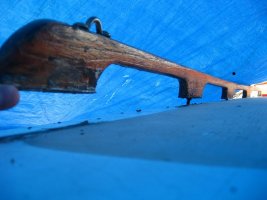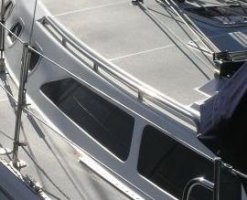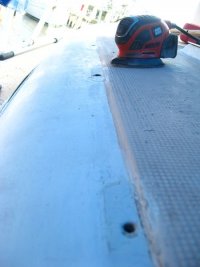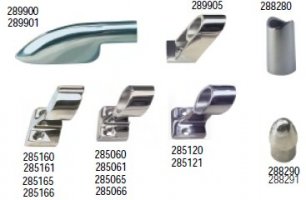Scyph
Member I
Thanks for the suggestion, CamD. I'll check out a glass shop when my roll of butyl runs out. I think it's worth it just for the sheer fun of telling people that I rebedded everything on my boat with chewing gum!
I finally got my outboard fixed. I had a lot of help from new friends in town. At this stage, I can't be too proud to ask for help. Turns out, there were three things wrong with the outboard: 1. I put it on the wrong side, and oil leaked through the carb and filter, and out onto my cockpit bench; 2. the emergency cutoff thingie was not in (*headdesk*); and 3. there's a safety peg that prevents the outboard from starting when it's in gear, and the pedal that was supposed to kick it up when it's in neutral wasn't kicking. This last reason is what I believe the previous owner had mistaken for the need to tune up the motor. We removed the safety peg. I'll need to be cautious when starting it.
Today is June 1, time to pay for June dockage. I'm officially down to $0 .... but I'll get the other half of my summer budget in 2 weeks.
.... but I'll get the other half of my summer budget in 2 weeks.
One of these days I'll go up the mast to see if I need a new anchor light, or just a new bulb. I can't take my mast down this year (I might next year). Any ideas of what to do if the anchor light isn't wired in? As far as I know, all I need is a 360-degree light on the top of the mast. As a temporary solution, I was thinking of raising a camping light up there. I'll probably spend a fortune in batteries that I could instead use to take the mast down. ..... I really hope it's just a bulb.
Speaking of wiring through the mast, is it possible to run a wire through there without taking the mast down? I can't for the life of me figure out how the wires go in there. I only traced them as far as the bilge, and then they vanish somewhere.
I finally got my outboard fixed. I had a lot of help from new friends in town. At this stage, I can't be too proud to ask for help. Turns out, there were three things wrong with the outboard: 1. I put it on the wrong side, and oil leaked through the carb and filter, and out onto my cockpit bench; 2. the emergency cutoff thingie was not in (*headdesk*); and 3. there's a safety peg that prevents the outboard from starting when it's in gear, and the pedal that was supposed to kick it up when it's in neutral wasn't kicking. This last reason is what I believe the previous owner had mistaken for the need to tune up the motor. We removed the safety peg. I'll need to be cautious when starting it.
Today is June 1, time to pay for June dockage. I'm officially down to $0
 .... but I'll get the other half of my summer budget in 2 weeks.
.... but I'll get the other half of my summer budget in 2 weeks.One of these days I'll go up the mast to see if I need a new anchor light, or just a new bulb. I can't take my mast down this year (I might next year). Any ideas of what to do if the anchor light isn't wired in? As far as I know, all I need is a 360-degree light on the top of the mast. As a temporary solution, I was thinking of raising a camping light up there. I'll probably spend a fortune in batteries that I could instead use to take the mast down. ..... I really hope it's just a bulb.
Speaking of wiring through the mast, is it possible to run a wire through there without taking the mast down? I can't for the life of me figure out how the wires go in there. I only traced them as far as the bilge, and then they vanish somewhere.
Last edited:






